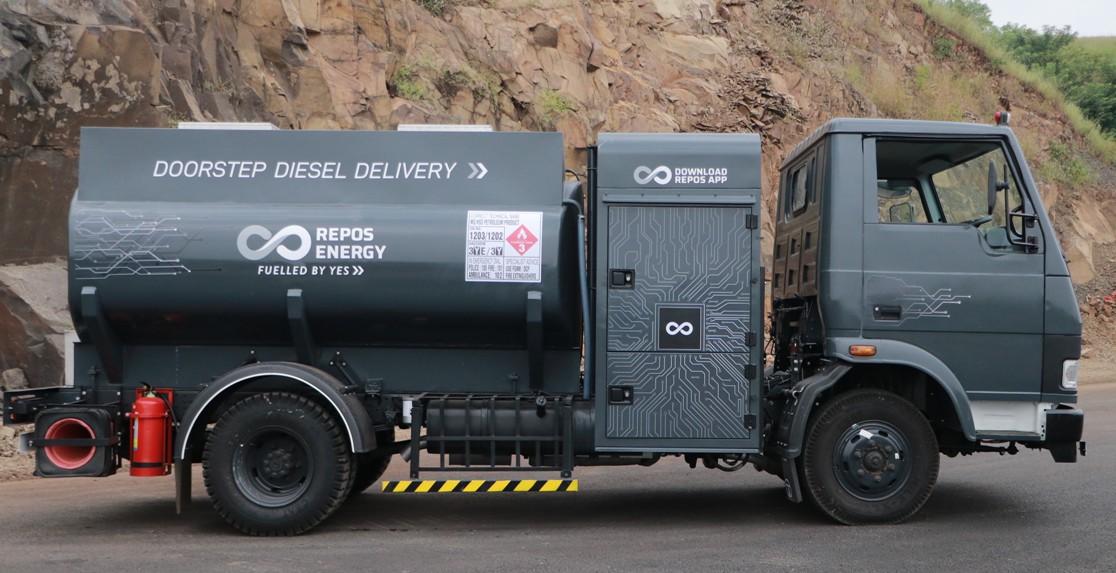 India comes third in terms of energy consumption after the USA and China and the per-capita energy consumption in India is only poised to go up in the coming years. In fact, some projections suggest that India’s energy consumption will almost double in the coming decade or so. Despite this, India, as a nation, still relies on archaic energy distribution infrastructure, and therefore needs to seriously rethink the fuel distribution model, notes Chetan Walunj, Co-founder, Repos Energy.
India comes third in terms of energy consumption after the USA and China and the per-capita energy consumption in India is only poised to go up in the coming years. In fact, some projections suggest that India’s energy consumption will almost double in the coming decade or so. Despite this, India, as a nation, still relies on archaic energy distribution infrastructure, and therefore needs to seriously rethink the fuel distribution model, notes Chetan Walunj, Co-founder, Repos Energy.
The energy needs of a fast-developing country like India are incidental. Recent projections suggest that India’s energy consumption will almost double in the coming decade or so. But still, we as a nation, are reliant on the age-old energy distribution infrastructure that is proving to be inefficient and an obstacle in the ubiquitous growth of the geographies across the country.
Energy to access is paramount for the growth of industries and businesses. Today, the lack of robust infrastructure for the distribution of different forms of energy has led to shrinking of the energy basket to choose from for the consumers. Consequently, with a lack of convenient access to more efficient and environment-friendly forms of energy sources such as gas-based fuels, consumers are forced to go for diesel and petrol as they are relatively easily available. This is remarkably apparent looking at the heavy traffic congestions at the very few available CNG fuel stations in different Indian cities. This clearly is an issue of lack of infrastructure and needs our immediate attention.

India comes third in terms of energy consumption after the USA and China and the per-capita energy consumption in India are only poised to go up in the coming years. As of now, there are only 66,000 operational retail fuel outlets in the country which are way less when compared to those in USA and China. This has created skewed relationship in terms of supply and demand for energy.
These gaps in the infrastructure are even starker when we talk about other forms of energy such as CNG, LNG and LPG; the current number of CNG stations stands at just around 2,200 for the entire country. It is only obvious that we need to successfully build and operate more retail energy stations but there seem to be multiple reasons for the number of retail fuel stations not keeping up with the demand.
As of now, there are only 66,000 operational retail fuel outlets in the country which are way less when compared to those in USA and China.
Building a retail fuel station requires land, preferably at prime locations in the cities which are obviously locked for a long period of time and land acquisition for business has always been a difficult task in India. On top of it, building a retail fuel station is CAPEX and OPEX heavy business. These are some of the most important reasons so to why the retail fuel infrastructure in the country hasn’t grown according to the need. But with the recent developments in the vertical of petroleum retail in the country, we are standing at the cusp of a golden opportunity to rectify the problems and inefficiencies from the current fuel distribution system.
More than two years ago, the Ministry of Petroleum & Natural Gas (MoPNG) envisioned doorstep delivery of diesel using mobile petrol pumps on wheels and the developments in the technology. Since then, the pilot of doorstep diesel delivery has been successfully implemented in multiple cities across the country.
Within the next five years, more than 50 per cent of the diesel consumption and considerable petrol consumption can be catered through mobile petrol pumps.
This has opened up exciting options for the distribution of energy in the country. Mobile petrol pumps delivering diesel and petrol to end-consumers can obviate the need of consumers having to procure it from retail fuel stations. This would reduce the persisting stress on the existing stations and lead to freeing up of space at these retail fuel outlets to dispense CNG, LNG or EV charging which will lead to the building of integrated fuel retail outlets. So these stations would be distributing all kinds of fuel under one roof. Such integrated fuel stations would obviate the need for land acquisition and the building of new retail fuel stations up from scratch.
Within the next five years, more than 50 per cent of the diesel consumption and considerable petrol consumption can be catered through mobile petrol pumps. Thousands of retail fuel stations in the country can be converted into integrated retail outlets distributing diesel, petrol, CNG, LNG as well as EV charging. This new energy distribution ecosystem would leverage the existing infrastructure through retail fuel stations and make it easier to rapidly build this solution all across the nation.
The government must encourage the implementation of integrated fuel stations.
Union Minister for Petroleum & Natural Gas, Dharmendra Pradhan, has reiterated his plans of distributing all kinds of fuel under one roof. It is also one of the goals of the Government of India to push gas-based fuels in the energy basket to 15 per cent and encourage the consumption of environment-friendly fuels. Also, the Union minister for Road Transport and Highways, Nitin Gadkari, has recently proposed the idea of leveraging existing retail fuel stations for putting up EV charging infrastructure.
For the Government of India to realize its dream of a new way of energy distribution based on the cornerstones of efficiency, affordability, accessibility and security, it needs to make a necessary rule and policy changes to encourage the implementation of integrated fuel stations. With the recent developments and the proof of concept, there is a strong case for the success of such an energy distribution ecosystem with the two-fold solution of doorstep fuel delivery and integrated fuel stations.


